Scuderia Ferrari S.p.A. is the racing division of luxury Italian auto manufacturer Ferrari and the racing team that competes in Formula One racing. The team is also known by the nickname "The Prancing Horse", in reference to their logo. It is the oldest surviving and most successful Formula One team, having competed in every world championship since the 1950 Formula One season. The team was founded by Enzo Ferrari, initially to race cars produced by Alfa Romeo. By 1947 Ferrari had begun building its own cars. Among its important achievements outside Formula One are winning the World Sportscar Championship, 24 Hours of Le Mans, 24 Hours of Spa, 24 Hours of Daytona, 12 Hours of Sebring, Bathurst 12 Hour, races for Grand tourer cars and racing on road courses of the Targa Florio, the Mille Miglia and the Carrera Panamericana. The team is also known for its passionate support base, known as the tifosi. The Italian Grand Prix at Monza is regarded as the team's home race.

British American Racing (BAR) was a Formula One constructor that competed in the sport from 1999 to 2005. BAR began by acquiring Tyrrell, and used Supertec engines for their first year. Subsequently, they formed a partnership with Honda which lasted for the next six years.
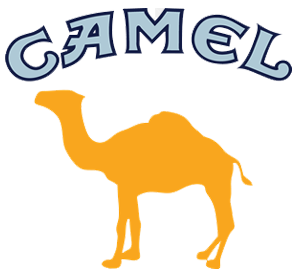
Camel is an American brand of cigarettes, currently owned and manufactured by the R. J. Reynolds Tobacco Company in the United States and by Japan Tobacco outside the U.S.
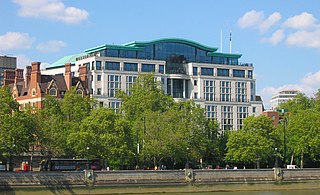
British American Tobacco plc (BAT) is a British multinational company that manufactures and sells cigarettes, tobacco and other nicotine products. The company, established in 1902, is headquartered in London, England. As of 2021, it is the largest tobacco company in the world based on net sales.

Marlboro is an American brand of cigarettes owned and manufactured by Philip Morris USA within the United States and by Philip Morris International outside the US except Canada where the brand is owned and manufactured by Imperial Tobacco Canada. Marlboro's largest cigarette manufacturing plant is located in Richmond, Virginia.
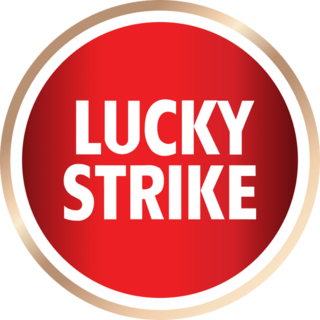
Lucky Strike is an American brand of cigarettes owned by the British American Tobacco group. Individual cigarettes of the brand are often referred to colloquially as "Luckies."
Benson & Hedges is a British brand of cigarettes owned by American conglomerate Altria. Cigarettes under the Benson & Hedges name are manufactured worldwide by different companies such as Rothmans, Benson & Hedges, Philip Morris USA, British American Tobacco, or Japan Tobacco, depending on the region. In the UK, they are registered in Old Bond Street in London, and were manufactured in Lisnafillan, Ballymena, Northern Ireland, before production was moved to Eastern Europe in 2017.
Prodrive is a British motorsport and advanced engineering group based in Banbury, Oxfordshire, England. It designs, constructs and races cars for companies and teams such as Aston Martin, Bahrain Raid Xtreme and Team X44. Its advanced technology division applies this motorsport engineering approach to deliver engineering solutions into automotive OEMs, aerospace, defence, marine and other sectors, which now represents more than half its turnover. Prodrive also has a specialist composite division based in Milton Keynes where it manufactures lightweight carbon composite CFRP and visual carbon components for many supercars and increasingly for the luxury automotive, aerospace and marine sectors.

John Player & Sons, most often known simply as Player's, was a tobacco and cigarette manufacturer based in Nottingham, England. In 1901, the company merged with other companies to form The Imperial Tobacco Company to face competition from US manufacturers. The company also released several series of association football trading cards in the 1930s under the Player's brand.

Winfield is an Australian brand of cigarettes, currently owned by multinational company British American Tobacco. Cigarettes are manufactured and imported by British American Tobacco Australia (BATA), a subsidiary of British American Tobacco.

Sobranie is a brand of cigarettes, currently owned and manufactured by Gallaher Group, a subsidiary of Japan Tobacco.
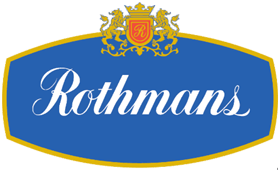
Rothmans International PLC was a British tobacco manufacturer. Its brands included Rothmans, Player's and Dunhill. Its international headquarters were in Hill Street, London and its international operations were run from Denham Place in Denham Village, Buckinghamshire.

The BAR 01 was the car with which the British American Racing Formula One team competed in the 1999 Formula One season, its inaugural year in the series after purchasing Tyrrell. It was driven by Jacques Villeneuve, the 1997 Champion who had left Williams in order to work with team principal Craig Pollock, his manager and good friend. The second driver was Ricardo Zonta, the 1997 Formula 3000 champion and 1998 FIA GT champion, although Mika Salo would deputise early in the season after the Brazilian injured his ankle at Interlagos.
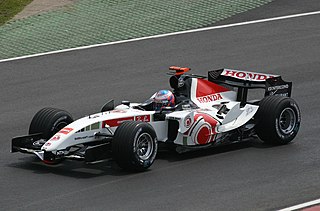
The BAR 007 was a Formula One car used by British American Racing in the 2005 Formula One season. The car was driven by Jenson Button and Takuma Sato, although Sato was replaced by Anthony Davidson for the Malaysian Grand Prix as he had the flu. The team's test driver was Enrique Bernoldi along with Davidson.
Formula One sponsorship liveries have been used since the 1968 season. Before the arrival of sponsorship liveries in 1968 the nationality of the team determined the colour of a car entered by the team, e.g. cars entered by Italian teams were rosso corsa red, cars entered by French teams were bleu de France blue, and cars entered by British teams were British racing green. Major sponsors such as BP, Shell, and Firestone had pulled out of the sport ahead of this season, prompting the Fédération Internationale de l'Automobile to allow unrestricted sponsorship.
Barclay was an American brand of cigarettes manufactured by R. J. Reynolds Tobacco Company in the U.S. and by British American Tobacco outside of the U.S.

The BAR 006 was a Formula One car that competed in the 2004 Formula One season. The car was driven by Jenson Button and Takuma Sato, and the official test driver was Anthony Davidson. The car scored 11 podiums and a single pole position, with the BAR-Honda team finishing second in the 2004 championship. The BAR-Honda 006 was officially launched at Circuit de Catalunya, Spain on 1 February.
Gunston is a South African brand of cigarettes, currently owned and manufactured by the South African subsidiary of conglomerate British American Tobacco.

As nicotine is highly addictive, marketing nicotine-containing products is regulated in most jurisdictions. Regulations include bans and regulation of certain types of advertising, and requirements for counter-advertising of facts generally not included in ads. Regulation is circumvented using less-regulated media, such as Facebook, less-regulated nicotine delivery products, such as e-cigarettes, and less-regulated ad types, such as industry ads which claim to discourage nicotine addiction but seem, according to independent studies, to promote teen nicotine use.















